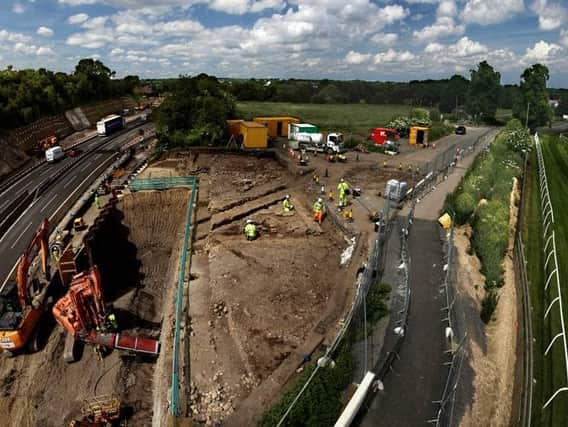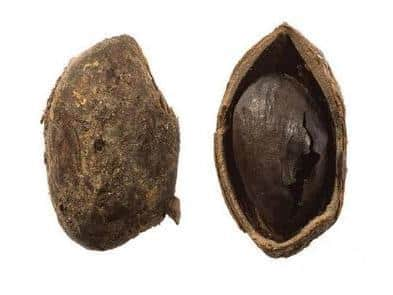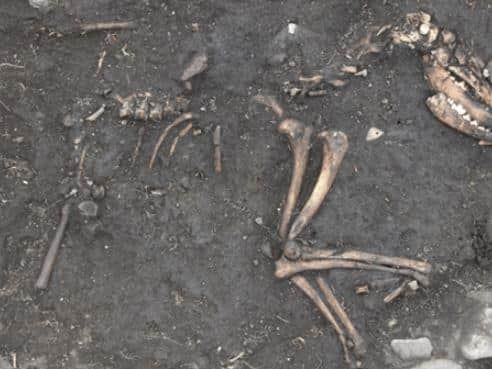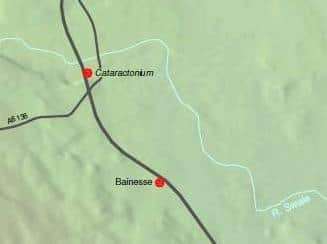Finds - including country's earliest pistachio nut - reveal history of Roman settlement off the A1 near Catterick


Where they crossed the river a settlement grew up in the AD70s and it was here where the A1 was widened that archaeologists discovered more about its 400 years of continuous occupation in a dig that finished in 2018.
Now the the last of three pieces of research linked to Highway England's A1 Leeming to Barton upgrade is being published.
Advertisement
Hide AdAdvertisement
Hide AdMore than 62,000 objects were recovered, with many rare and exotic items imported from the Mediterranean and North Africa, including the earliest pistachio nut known in Britain, incense burners, and a carnelian intaglio depicting Hercules and the lion that would have been set into a ring.


Other discoveries include a carved phallus – a symbol often associated with protective powers – on a reused bridge stone, a brooch depicting a hare, and an Anglo-Saxon dog burial.
The settlement developed in the AD70s where Dere Street – a prehistoric routeway, not Roman as is often supposed – crossed the River Swale.
Archaeologists were confined to a 300-metre corridor to minimise harm to buried remains.
Advertisement
Hide AdAdvertisement
Hide AdSouth of the Swale they found what may have been a storage depot, with two timber granaries, a stock enclosure and a well which contained the remains of a basket and the pistachio nut.


An earlier dig, when the Catterick bypass was built in the 1950s, uncovered the remains of an inn with a bath wing for travelling officials.
The wealth of archaeology discovered in the latest dig shows that it was much more than a stopping point, with high-quality buildings continuing well into the 4th century.
“Cataractonium wasn’t a typical vicus (settlement that develops round a fort). When the fort was abandoned the town was big enough to survive by itself,” said Dr Jonathan Shipley, AECOM principal heritage consultant.
Advertisement
Hide AdAdvertisement
Hide AdThe settlement on the south of the Swale was fortified by a substantial wall, which may be attributed to Septimus Severus’s advance north towards Caledonia in AD 209-210.


The remains of the town wall were investigated by excavations at an area called Agricola Bridge, revealing a large cobble-and-clay wall foundation and remains of the north gate house which led to a stone bridge that carried Dere Street across the River Swale.
The carving of the phallus on the stone which was found at Agricola Bridge is similar to one on a Roman bridge across the North Tyne at Chesters.
The northern suburb of Cataractonium appeared to serve as a supply area from the mid-3rd century, with several large commercial ovens found in association with open-fronted stone and timber structures along the main road.
Advertisement
Hide AdAdvertisement
Hide AdBurials and a single cremation were discovered in the back gardens of the buildings – presumably the residents – including a possible family group - a man and woman with three children.
One individual had a stack of nine coins placed in their mouth, and two others were associated with fish hooks.
With the burials were objects - including finger-rings and the remains of hobnailed footwear.
Excavations just over a mile to the south of Cataractonium revealed new evidence for the extent of a Roman roadside settlement at Bainesse and for an enclosure complex to the west, which served as farmland to supply local and military demands.
Advertisement
Hide AdAdvertisement
Hide AdThe site was home to a densely packed cemetery, containing 232 burials and 17 cremations, used from the late 1st century AD through to the mid-5th century AD.
Highways England project manager Liam Quirk said: “We are proud to be able to contribute to the knowledge of the past through our funding of the archaeological work and we are delighted to have been able to add to the understanding of Roman settlements like Cataractonium and preserve the history of Yorkshire.”
The finds are now held by the Yorkshire Museum in York.
Comment Guidelines
National World encourages reader discussion on our stories. User feedback, insights and back-and-forth exchanges add a rich layer of context to reporting. Please review our Community Guidelines before commenting.